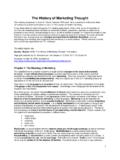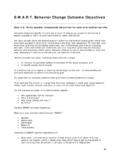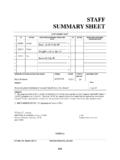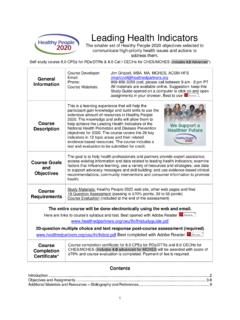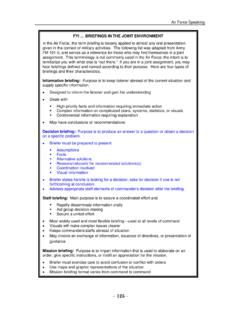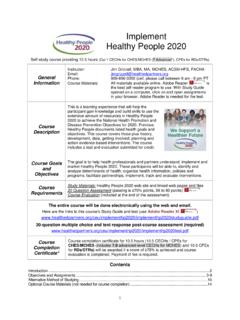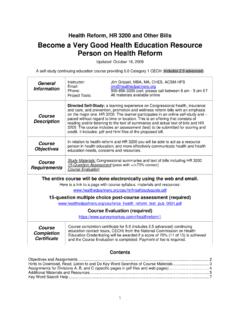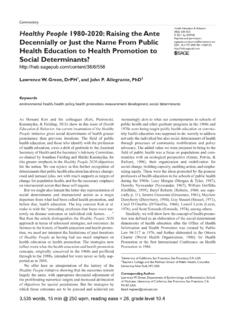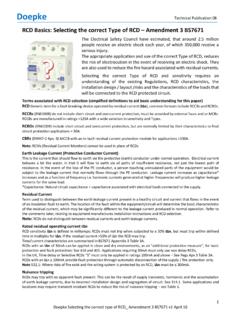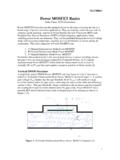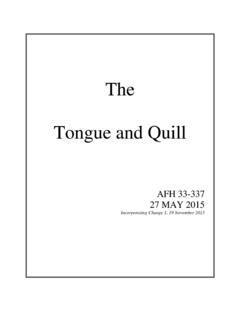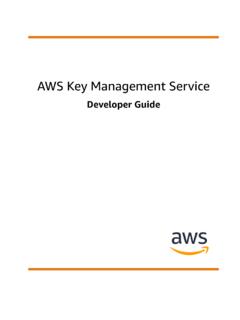Transcription of Prevent Gun Violence - Health Education Partners
1 1 Self-study course with 14 Cat I CECHs for CHES/MCHES (includes Advanced*). Additional FREE from CDC continuing Education hours are available. General Information Course Developer: Email: Phone: Course Materials: Jim Grizzell, MBA, MA, MCHES, ACSM-EP-C, FACHA 909-856-3350 (cell, please call between 9 am - 8 pm PT All materials are available online. Suggestion: keep this Study Guide opened on a computer to click on and open assignments in your browser. Best to use. Course Description This is a learning experience that will help the participant gain knowledge and competencies to reduce gun Violence as a Health problem (~33,700 deaths/year, ,000, ~35% homicide, ~61% suicide1, 2 (similar to vehicle traffic deaths), over 465,000 nonfatal firearm victims (23% injured)3, 4).)
2 The Public Health Approach, and evidence-based strategies and decision making are studied. The history and interpretations of the 2nd Amendment and Supreme Court decisions are studied to learn how laws can be permissible. Pro-prevention and gun lobby groups are reviewed. Course Goals and Objectives The goal is to help Health professionals and Partners provide expert assistance applying the Public Health Approach with evidence-based, sound theoretically-based, legal (Constitutional) and ethical strategies to reduce gun Violence . Course Requirements Study Materials: Web sites and files available online 16 Question Assessment (passing is 70%, 35 to 50 points) Course Evaluation (included at the end of the assessment) The entire course will be done electronically using the web, electronic files and email.
3 Here are links to course s syllabus and test. Best opened with Adobe Reader 16-question TF, multiple choice and text response post-course assessment (required) Best completed with Adobe Reader Completion Certificate Certificate for 14 Category 1 CECHs for CHES/MCHES (includes advanced for MCHES will be awarded with score of 70% and course evaluation is completed. Payment of fee is required. Contents Introduction .. 2 Objectives and Assignments .. 3-25 References 1. CDC Faststats 2. CDC National Center for Health Statistics 3. National Institute of Justice 4. Institute of Medicine , Bureau of Justice , Prevent Gun Violence Use the Public Health Approach & Evidence-Based Strategies 2 Introduction This course will help Health professionals provide expert assistance to apply the Public Health Approach (PHA) and use evidence-based and evidence-informed strategies to reduce gun Violence .)
4 Gun Violence includes murder/homicide, assault, injury, robbery, assault, domestic Violence , suicide, unintentional and accidental shooting. Public Health Approach - Many professional Health organizations urge using PHA. The course follows an outline of the PHA key components to: 1) define and monitor the problem, 2) identify risk and protective factors, 3) develop and test prevention strategies, and 4) assure adoption. Evidence-Based Strategies - There may be well over 250 evidence-based (EB) and evidence-informed (effective and promising) strategies for Health professionals to use or adapt. Being able to find ones for your interests is covered in this course. CDC has two excellent online courses specifically related to Violence prevention.
5 You will take the Principles of Prevention and the Evidence Based Decision Making courses. 2nd Amendment and US Constitution - Concern for the right to bear arms, gun rights and fear that gun laws might lead to confiscation permissible laws are covered thoroughly. The 2nd Amendment and Supreme Court decisions give guidelines for laws that are is permissible. How background checks are done is covered in the course. Knowing the history and interpretation of the 2nd Amendment and Supreme decisions may help you understand and work with potential opponents. Potential Partners and stakeholders, allies and opponents are studied. Some required reading and a lot self-selected reading. It may appear that there is a too much to study but remember you get to review each section and, in most of them, select items you find most interesting and may be useful in your work.
6 The test (link on first page) has True/False, multiple choice questions and asks for very brief descriptions of what you selected to study and how you might use the information. Section .. Page 1. The Public Health Approach (~1 hour) .. 3 2. Principles of Prevention (from CDC s Division of Violence Prevention, ~ 2 hours) .. 5 3. Evidence Based Decision Making (from CDC s Division of Violence Prevention, ~2 hours) .. 7 4. Define and Monitor the Health Problem of Gun Violence (~1 hour) .. 9 5. Risk and Protective Factors that Promote and Prevent Gun Violence (~1 hour) .. 12 6. The 2nd Amendment History, Interpretations, Gun Laws can be Constitutional (~1 hour) .. 16 7, Implemented Strategies: President Executive Order, Congressional & State Legislation (~ hours) 17 8.
7 Public Health and Other Organization Promoted Prevention Strategies (~ hour) .. 19 9. Health Education Strategies (~1 hour) .. 21 10. Potential Collaborative Relationships for Widespread Adoption (Allies and Opposition) (~1 hours) .. 23 Test Instructions and Test ( hour) .. 25 About the Course Developer - Jim Grizzell .. 25 Ways to Find the Study Assignments and Time Estimates, and Take the Test 1. Keep this Study Guide opened on your computer to be able to click on the links in the Study Guide. 2. Follow instructions on a printed copy to get to assignments. Time to complete the course includes two components: 1) Estimated time to read text based on reading speeds of 250 words per minute (wpm) to faster speed at 300 wpm and 2) An additional 10% to 20% of time is allowed for skill development learning to navigate to and open web pages.
8 Taking the test: be sure to open the test with Adobe Reader DC (DC is most recent version and free). NOTE for Mac users: be sure to switch from Mac s Preview program to Open with: Adobe Reader. 3 Estimated Time Sections, Objectives and Assignments ~ hour Introduction Thoroughly Review and prepare to use this Study Guide. Remember to look for the instructions for required reading, and other reading/studying to tailor the course for your needs, interests, and your work. (~30 min) ~ hours Objectives match the NCHEC responsibil-ities and competencies for CHES and MCHES. Read / study all materials in this section. Section 1: Prevent Gun Violence with the Public Health Approach After studying the materials the participant will be able to: Apply theories and models to develop assessment strategies, critique sources of Health information, and identify gaps in data using theory and evidence from the literature ( , , , , ) Select planning models for Health Education ( ) Design and apply theory-based strategies and interventions to achieve objectives ( , ) Use learning theory to develop or adapt training programs ( ) Study Assignment Read/study the CDC, IOM, APA and JAMA web pages and articles describing PHA.
9 (~60 min) Center for Disease Control and Prevention (CDC) The Public Health Approach to Violence Prevention (read web page or 2-page pdf file) or (~10 min, 800 words) CDC VetoViolence (~10 min) 4 Institute of Medicine Priorities for Research to Reduce the Threat of Firearm-Related Violence read/study one of these from the main web page: Report Brief (web page or pdf), or the slide show) (~10 min, ~600 words or 38 slides) Report Brief (pdf) Slide show (38 slides, pdf format) American Psychological Association Gun Violence Prevention Requires Public Health Approach (~10 min, 600 words) Journal of the American Medical Association (FREE article) Curbing Gun Violence : Lessons from Public Health Successes or (~10 min, 1,000 words) 20 Second Video with Vivek Murthy, Surgeon General hours Section 2: Principles of Prevention After studying the materials the participant will be able to: 5 You can get an additional free continuing Education hours from CDC for completing this section.
10 See instructions at the end of this section and at the POP web site. NOTE: four test questions for this self-study course are the same is those used in the CDC Principles of Prevention and Understand-ing Evidence courses. Consider taking notes. The CDC test questions do make us think and apply what is taught. Select planning models for Health Education ( ) Design theory-based strategies and interventions to achieve objectives ( ) Apply theories and models of implementation ( ) Use evidence-based research to develop policies to promote Health ( ) Study Assignment Complete the CDC Principles of Prevention (POP) course. At the beginning of the POP course you can choose to take the course for CECH free continuing Education hours for CHES/MCHES.
